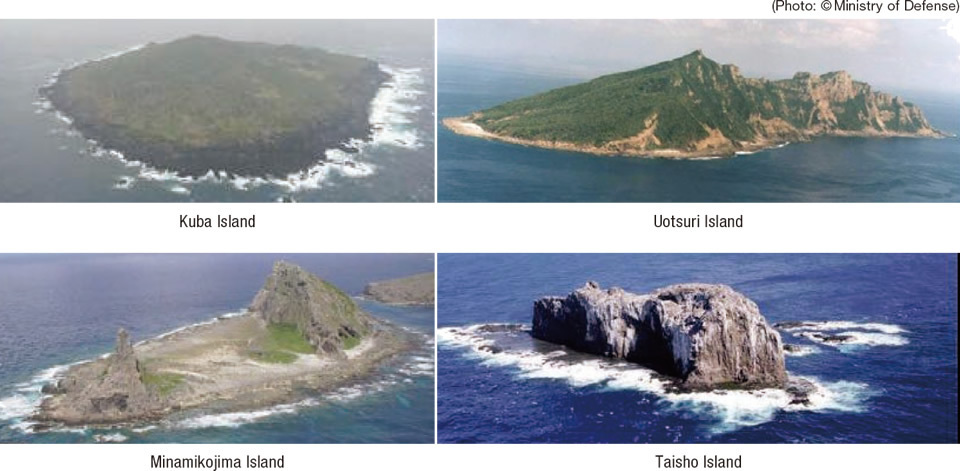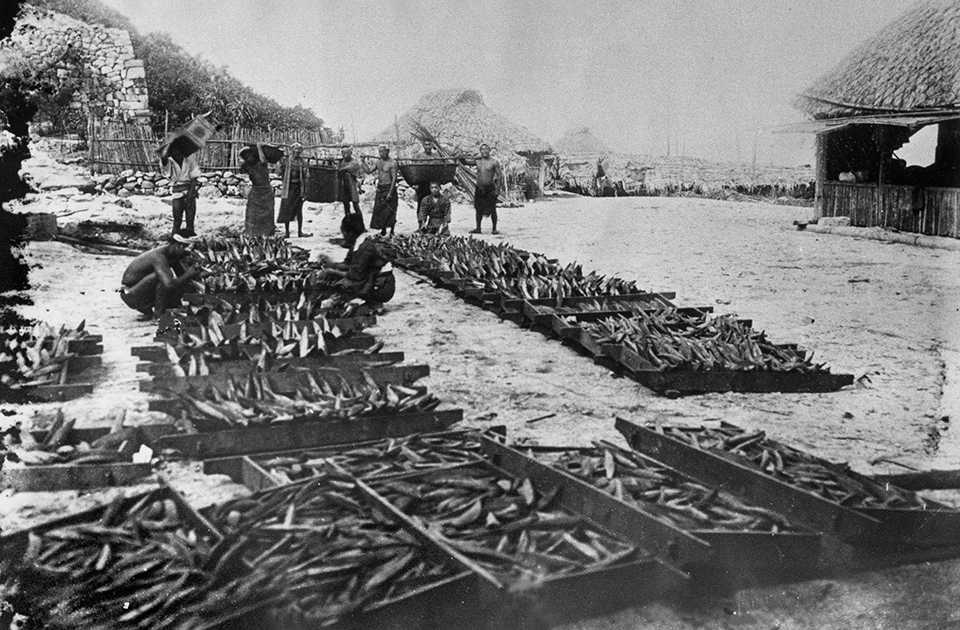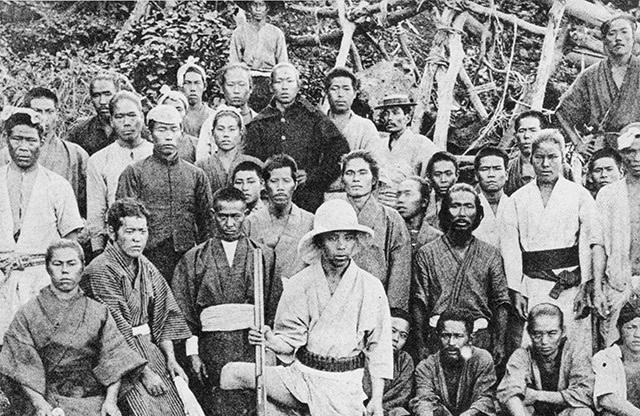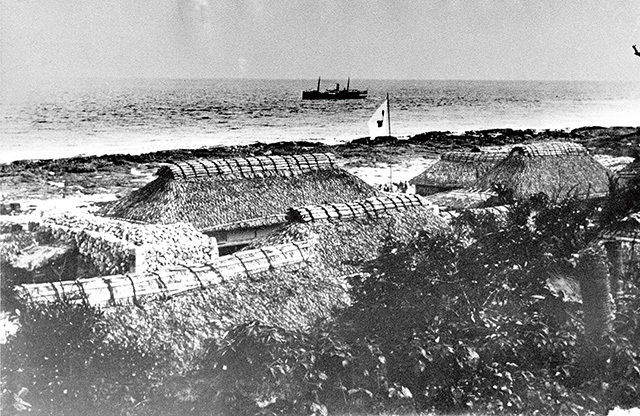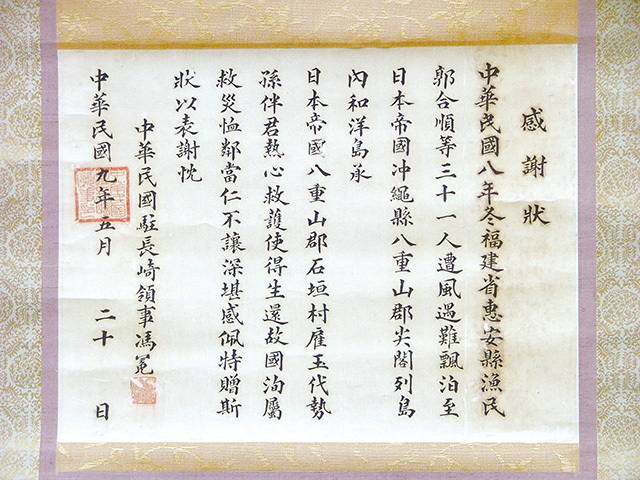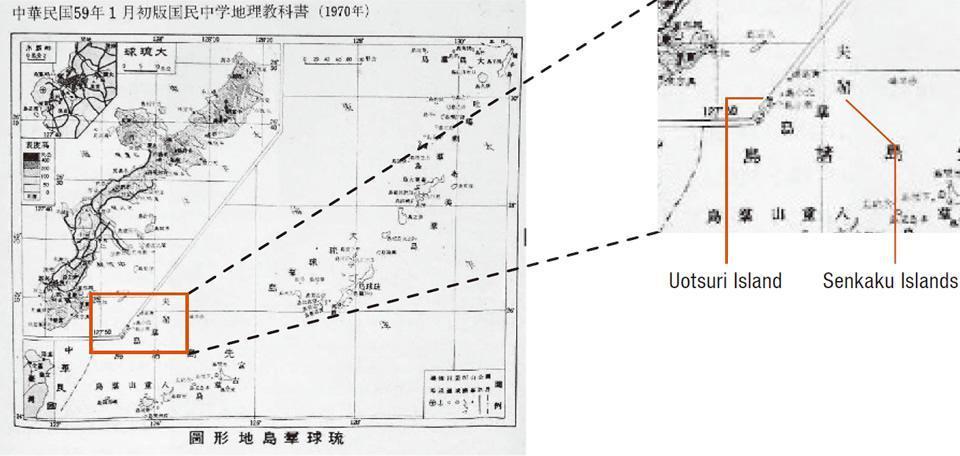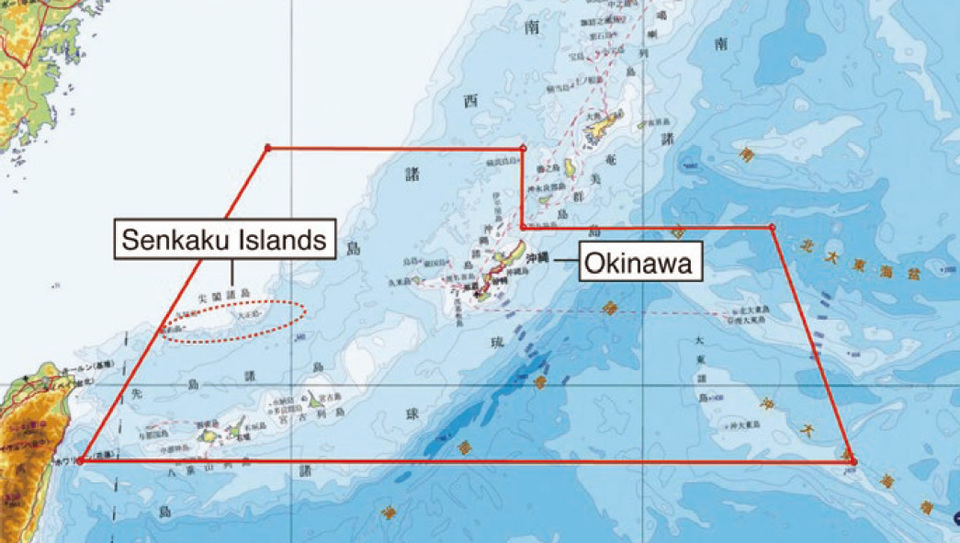Many of the recent media stories about the Senkaku Islands seem to be based on mistaken notions. Here we examine some of the most commonly held misconceptions.
Misconception 1: “Japan ‘seized’ the Senkakus from China.”
Stories about the Senkaku Islands often state casually that Japan “seized them” from China as a result of the Sino-Japanese War. Is this true? Japanese fishermen and merchants had already grown active in and around the Senkakus for some years by 1893 when some of them drifted ashore in China (then under the rule of the Qing Dynasty) and were questioned by the authorities there. Despite such an increase in activities by Japanese citizens on the Senkaku Islands, there is no record whatsoever of China having asserted sovereignty over these islands during that time, including in the aforementioned case. Against this backdrop, Japan incorporated the Senkakus into Okinawa Prefecture with a Cabinet decision in January 1895. In no sense did Japan “seize” them, much less “steal” the islands from China. In this light, it is only natural that these islands did not come up for discussion in the April 1895 peace treaty negotiations at the end of the Sino-Japanese War of 1894- 95. In the first place, a report on Japan submitted to the Qing government by one of its experts in 1889, titled You li Riben tu jing (Maps, Figures and Depiction of Japan based on field research), explicitly listed the Senkakus as Japanese territory. The preface to the report was written by none other than Premier Li Hongzhang, a powerful statesman who soon after represented China in the April 1895 peace talks. It is thus simply inconceivable that the Qing government considered the Senkakus to have been “seized” from it.
Misconception 2: “Japan is overturning the post-World War II order.”
Stories about the Senkakus sometimes contain the assertion that Japan is seeking to overturn the post-World War II international order. This is also mistaken. One only needs to examine the way Japan’s territory was determined under the San Francisco Peace Treaty, which is the very basis for the “postwar order” in East Asia. Under this treaty, Japan relinquished part of its prewar territories including Taiwan and the Korean Peninsula. The areas that Japan did not relinquish were thus determined to be Japanese territory under this treaty. The Senkakus were in the latter category. The treaty also provided that Okinawa, a portion of Japan’s remaining territory under this treaty, was to be administered by the United States, and the scope of Okinawa, given in geographical coordinates of longitude and latitude, explicitly included the Senkakus. It is therefore only natural that, when the United States returned Okinawa to Japanese administration in 1972, the Senkakus were included in the reversion. Likewise, it is not surprising that two of the islands in the Senkakus continue to be designated as firing/bombing ranges for the U.S. forces in Japan by the United States and the Japanese governments.
It was in 1971 that China started to challenge this “postwar order” with assertions of sovereignty over the Senkakus, after the possible existence of oil deposits in the area was pointed out. Japan, meanwhile, has observed the United Nations Charter and supported the “postwar order” as a peaceloving nation that has not fired even a single shot against another nation during the entire postwar period and as a democracy that embodies universal values like the rule of law and respect for human rights.
It is often asserted that the Senkakus were “returned” to China under the Cairo Declaration of 1943, but this is another error. Needless to say, by definition, mere political documents like the Cairo Declaration cannot determine countries’ territory. This can be done only by means of legal instruments on the basis of international agreements, such as the San Francisco Peace Treaty. To begin with, the Cairo Declaration naturally contains no language whatsoever indicating that the Senkakus, which were not “seized” from China in the first place, have to be somehow “returned.” If the islands had been “returned” under this declaration, why did no country assert sovereignty over them from 1945 to 1971? The absence of such claims clearly demonstrates that the Senkakus are Japanese territory and that the “postwar order” recognized them as such.
Life and Industry on the Senkaku Islands at a Glance
Residents of Uotsuri Island on the island during the Meiji era (1868-1912).
(Photo: Hanako Koga/©Asahi Shimbun)
Misconception 3: “Japan unilaterally heightened tensions by changing the status quo.”
In 2012 the government of Japan acquired ownership of part of the Senkakus that had been privately owned, including Uotsuri Island, the largest of the islands. It has sometimes been asserted that, in doing so, Japan unilaterally changed the status quo regarding ownership of the Senkakus, thereby heightening tensions. This, too, is erroneous.
First, title to portions of the Senkakus has changed hands in the past, both between the government and private owners and from one private owner to another. The islands that the government acquired in 2012 were ones that the government had previously owned. The fact is that whether the land is owned by the government or a private party in no way changes the fact that the Senkakus are Japanese territory under Japan’s valid control.
Second, it is China that unilaterally heightened tensions over the Senkakus prior to 2012. For example, in 1992, China suddenly listed the Senkakus as its own territory under its territorial sea law; beginning in 2008, it repeatedly sent official vessels to the area around the Senkakus and made incursions into Japan’s territorial waters. This behavior contradicts China’s claim that possession of the Senkakus was “shelved” by agreement between Japan and China in the 1970s. Of course, there was in fact no such agreement. China is continuing to heighten tensions in the area with attempts like these to change the status quo by force or coercion. In 2013, China took dangerous actions that escalated the situation in the area and that could have serious consequences, such as locking firecontrol radar on a Japanese Maritime Self-Defense Force vessel and suddenly declaring an Air Defense Identification Zone (ADIZ) over the East China Sea and unilaterally imposing mandatory rules on this airspace. In the face of such actions, Japan has consistently refrained from heightening tensions and responded in a way that aims to protect the international order based on the rule of law. At the same time, Japan continues to call for dialogue with China, which is its biggest trading partner, a long-time friend, and the counterpart in one of its most important bilateral relationships.
The Senkakus have a history of people full of vitality and good will.
In recent years, many people around the world have become familiar with the name “Senkaku Islands.” But what is still not widely known is the fact that these islands have an interesting history as the home of Japanese people full of vitality and kindness. After the islands were incorporated into Okinawa Prefecture in 1895, they became inhabited with a population that at its peak topped 200 residents, and a variety of economic activities were conducted there with the government’s approval. The principal industry was processing bonito caught in the islands’ waters, turning it into katsuo-bushi , the dried bonito used in making dashi fish stock. This dashi is the key to the delicious taste of many Japanese foods, and the katsuo-bushi from the Senkakus was good enough to win a silver medal in a nationwide competition in Japan. Also, small stuffed birds from the islands were used to decorate ladies’ hats in the Western world of the day. And albatross feathers from the island were valued as a material for down quilts in Western countries.
In 1920, after a group of Chinese fishers washed ashore and were rescued in the Senkakus, the consul of the Republic of China in Nagasaki Prefecture sent letters of appreciation to each of the Senkaku residents and other Japanese in Okinawa who were involved in the rescue; the letters explicitly indicate the Senkakus Islands as being part of Okinawa. The Japanese residents of the Senkakus thus played a part in building friendship between Japan and China.
Eventually the day will come when the Senkaku Islands are known to the people of the world for their true charm.
The Senkaku Islands at a Glance
Life and Industry on the Senkaku Islands at a Glance
Chinese consul’s 1920 letter of appreciation for the rescue of 31 fishermen washed ashore in the “Senkaku Islands, Yaeyama District, Okinawa Prefecture, Empire of Japan.”
(Photo: Yaeyama Museum)
































































































































